The snowdrop wave is starting to feel more like a tsunami and I am spending almost every day in the field looking for, and generally finding, snowdrops. I’ve seen ten species so far, spread over the months between mid-October 2015 and early March 2016. If, and it’s a jolly big if, things go according to plan, I aim to see the other 12* over the next five weeks. This is the sort of plan that Nassim Nicholas Taleb, self-described flâneur – a word that, coupled with ‘galanthophile’, might be carved on my gravestone – and author of Antifragile: Things That Gain From Disorder, would describe as ‘fragile’.
Virtually everything could go wrong.
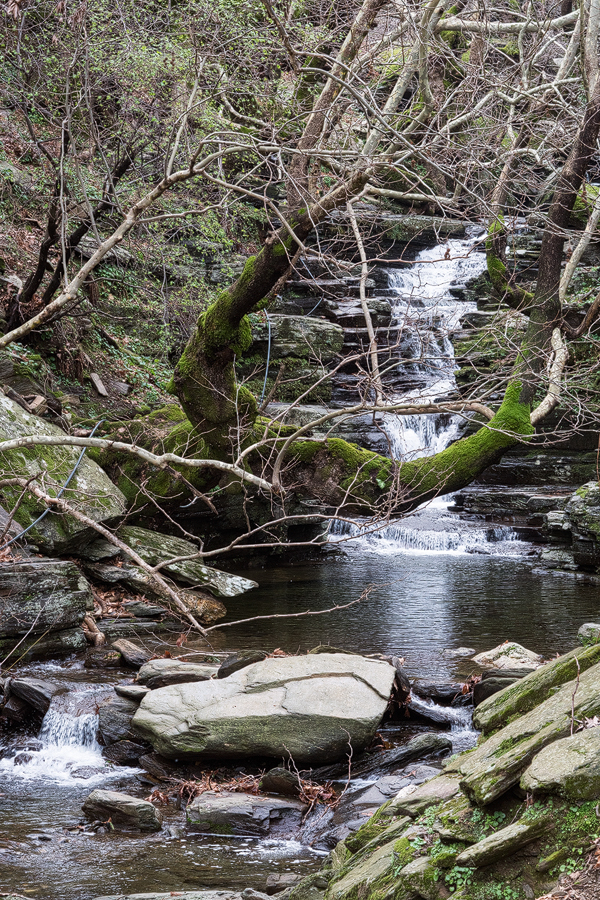
So far, to my amazement, so good. But the price of good fortune in snowdrop hunting is that it is becoming increasingly difficult to keep up with writing about my travels in anything approximating real time. The relatively brief windows of sobriety that exist between arriving at a hotel and commencement of the second bottle of red wine simply do not contain enough minutes, at my typing speed.
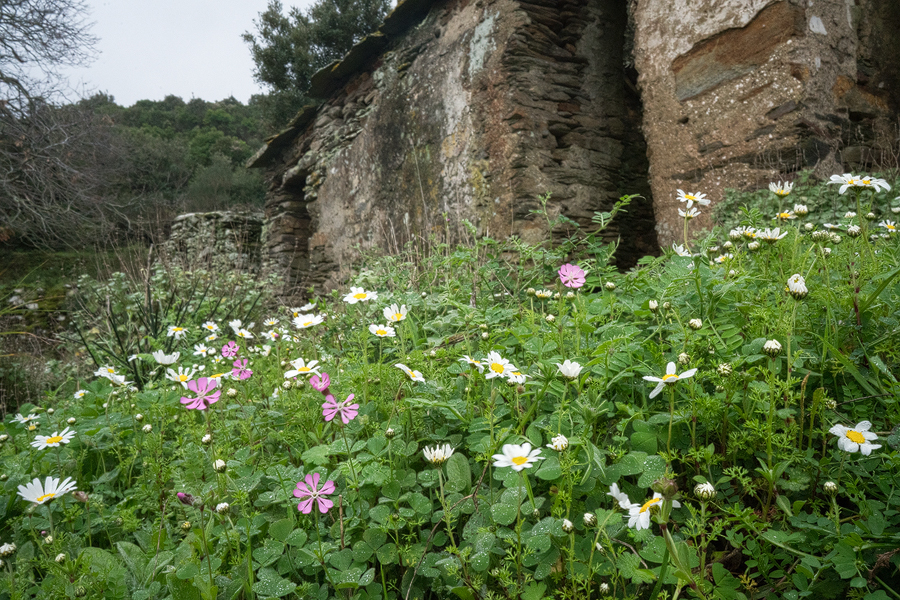
For the next few weeks, posts on this blog are likely to sound increasingly like dispatches sent in morse code, from a battlefield, occasionally with real guns.
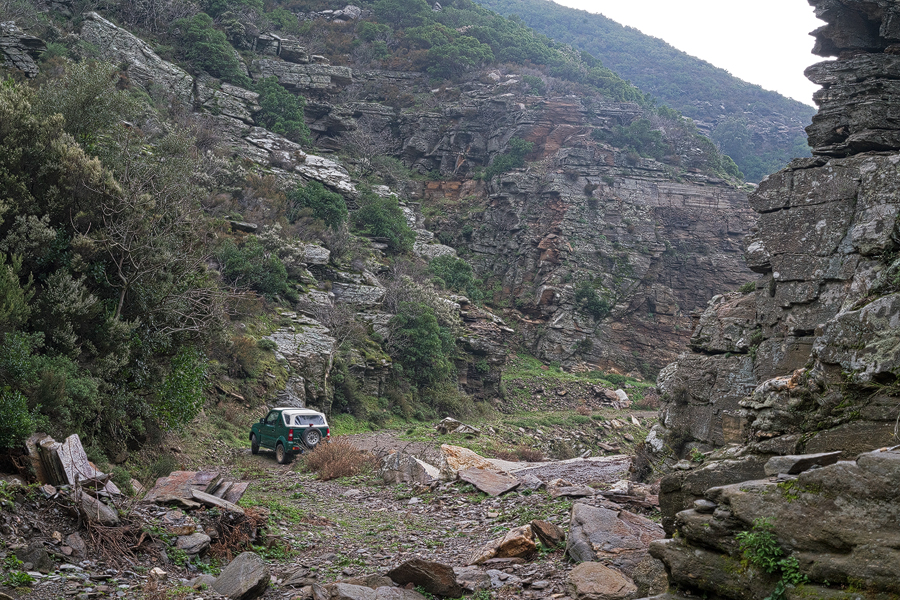
At Heathrow, huge billboards had announced that Terminal 5 had been voted the world’s best airport terminal. I don’t know who was doing the voting, but they need to get out more. Ikaria airport would get mine. It has one terminal – more of a shack, really. There is nothing to buy, because there are no shops, but the single kiosk serves excellent espresso. There is one conveyor belt, at which luggage arrives within two minutes of disembarkation. There is one car hire desk, and the lady behind it approaches you in the few seconds between landing and baggage retrieval, because you are the only tourist to have arrived on the island that day. She doesn’t ask for your credit card, because there are no facilities for swiping the card. One suspects that electricity is available only periodically. The walk to the waiting car is so short that it is hardly worth standing up to cross the few paces between the door of the shack and the parked car.
Hubris is my favourite sin, with sloth and gluttony coming joint second. So I have long wanted to visit Ikaria, where Icarus, son of Daedalus, fell to his death in the sea, having flown too close to the sun on his wings of wax and feathers. Snowdrops eventually provided the excuse, for Ikaria is home to the eponymous Galanthus ikariae, which also occurs further west in the Aegean.
Ikaria is long and relatively narrow, the long axis of the island oriented roughly west-east. The main ridge, with several peaks around 1000m tall, runs rather close to the south coast, so that most of the island faces north. Numerous rivers and streams drain into the sea on the north coast. It is in some of these valleys that snowdrops grow, much as I had found them on Andros and Naxos.
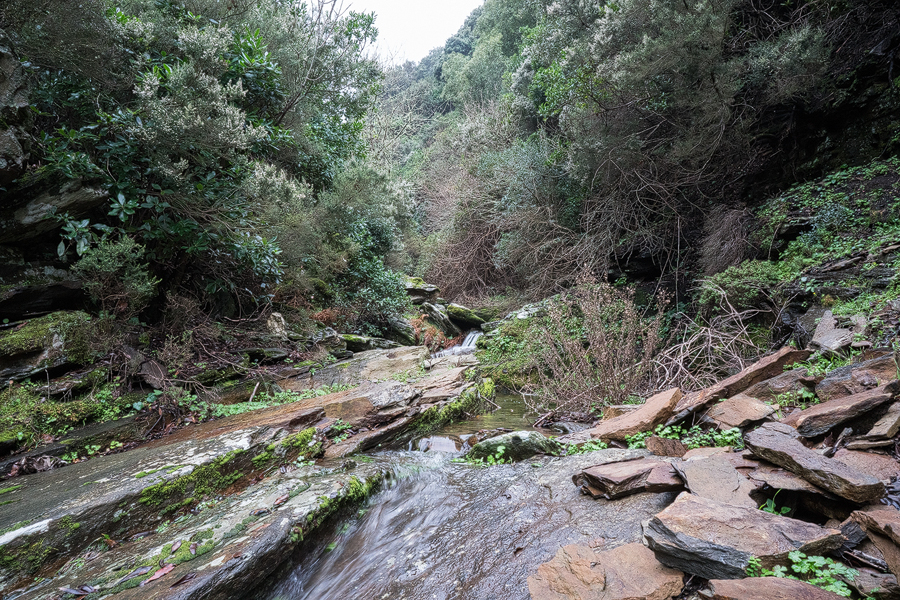
Populations were surprisingly rare. Most apparently suitable habitats did not have any snowdrops and, with one exception, the half a dozen populations that I found were small, containing a few dozen to a few hundred plants. My time on the island was brief and it is quite possible that I didn’t find other large populations that occur on the island, but it is clear that snowdrops are far from ubiquitous here.
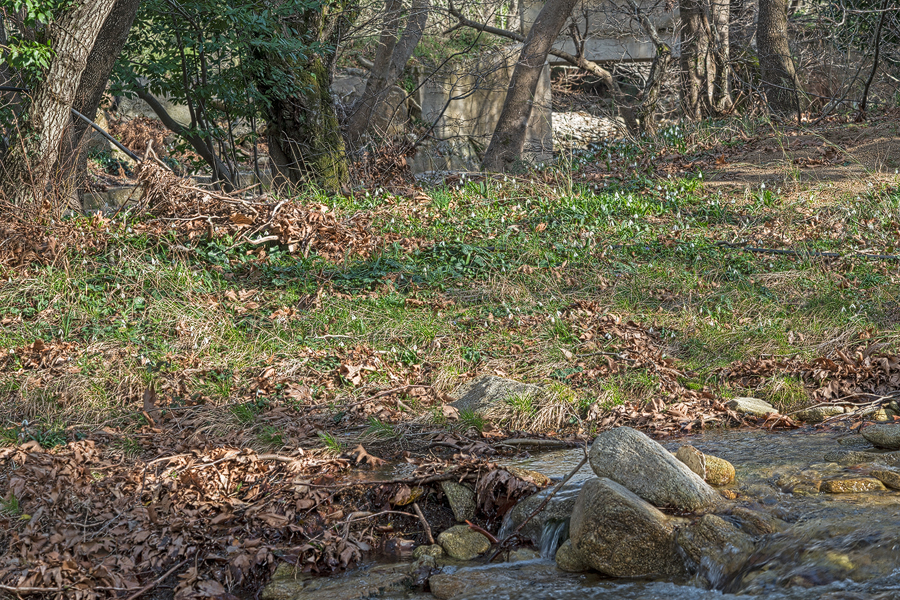
I was a little late to see the snowdrops at their peak. Most plants, in the populations that I found, were going over. But these were handsome plants, often clump-forming, with big flowers on strong, upright scapes, topped with scimitar-like, curving spathes.
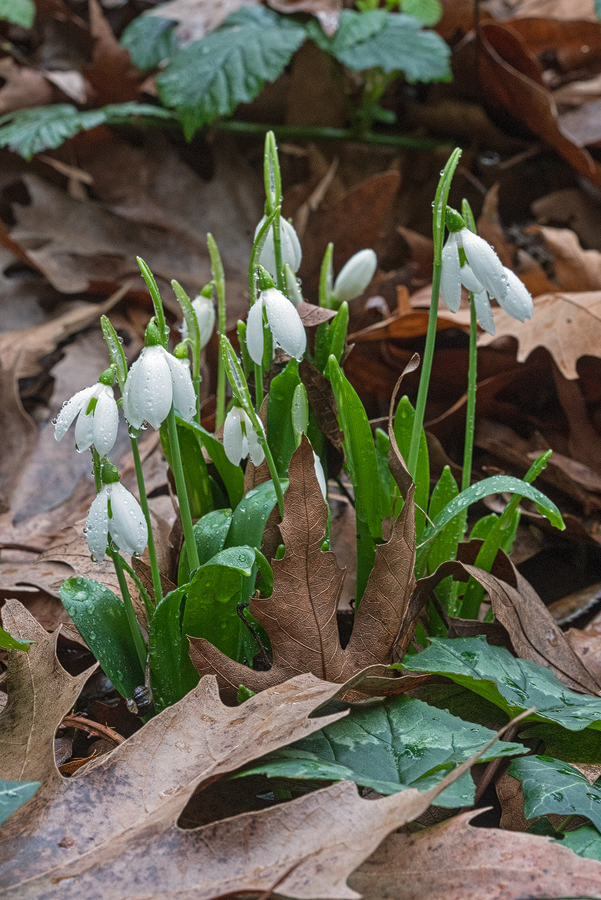
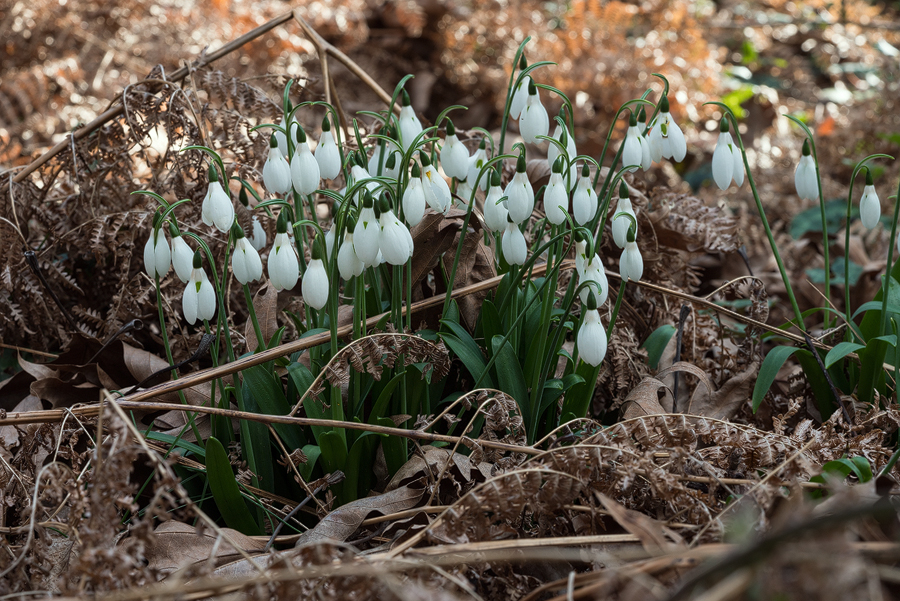
The inner segment marks, as with the plants on Andros and Naxos, reminded me of a molar tooth, occupying between a third and a half of the segment.
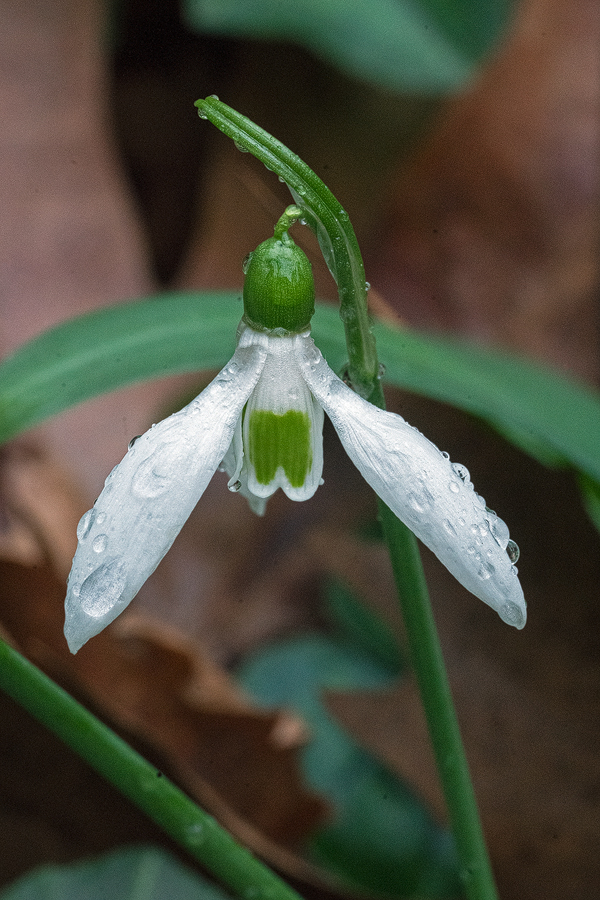
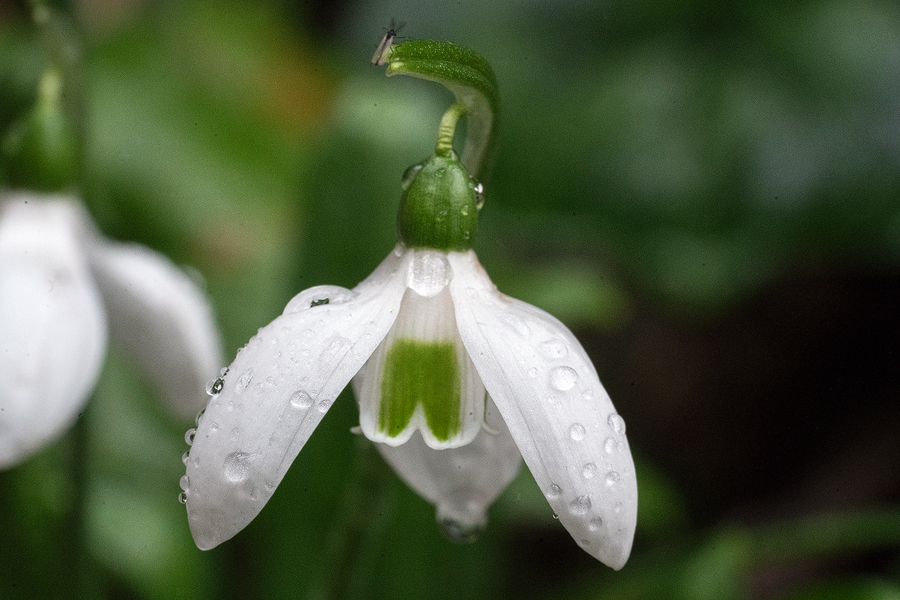
The snowdrops that I saw were growing either in almost pure sand, derived from the granite rocks, or in very stony, thin soil, enriched with leaf litter.
I was most interested to compare the snowdrops on Ikaria with those on Andos and Naxos, which some authorities regard as a distinct subspecies, ‘snogerupii’. The plants I saw on Ikaria were generally smaller in stature than those on Andros (on Naxos the plants I saw were just emerging). The leaves of the Ikaria plants were a darker, matt green, than the plants on Andros and Naxos. The flowers were very similar – indistinguishable, in my judgement. If you were to grow, side-by-side, snowdrops from Andros, Naxos and Ikaria you would, I think be able to tell at a glance whether the plants originated from the latter or the former two islands, not least on account of their very different flowering times. But as to whether they represent different species, that’s an argument for Byzantine bishops, not galanthophiles.
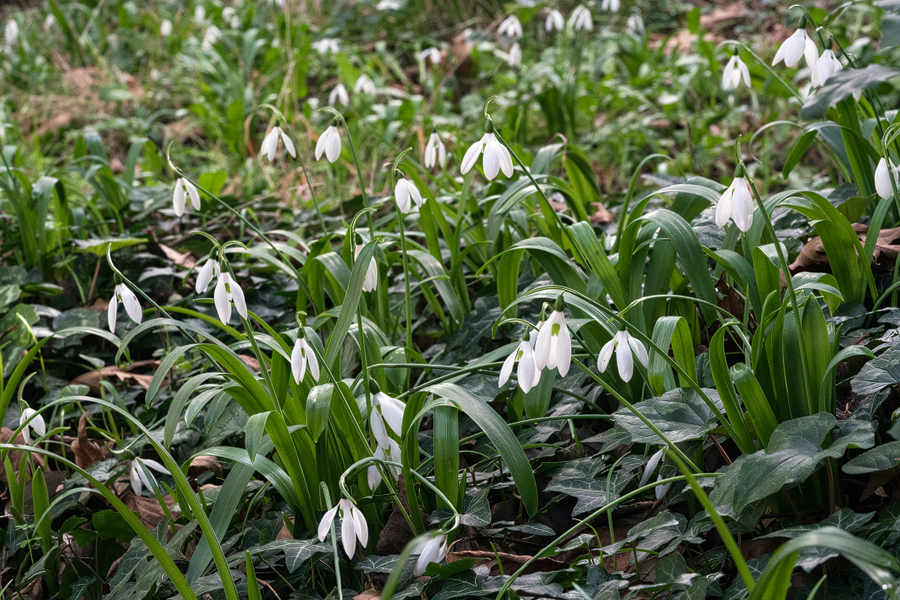
Growing with the Galanthus in one site, and on pure sand on its own at another, was Crocus biflorus subsp. nubigena.
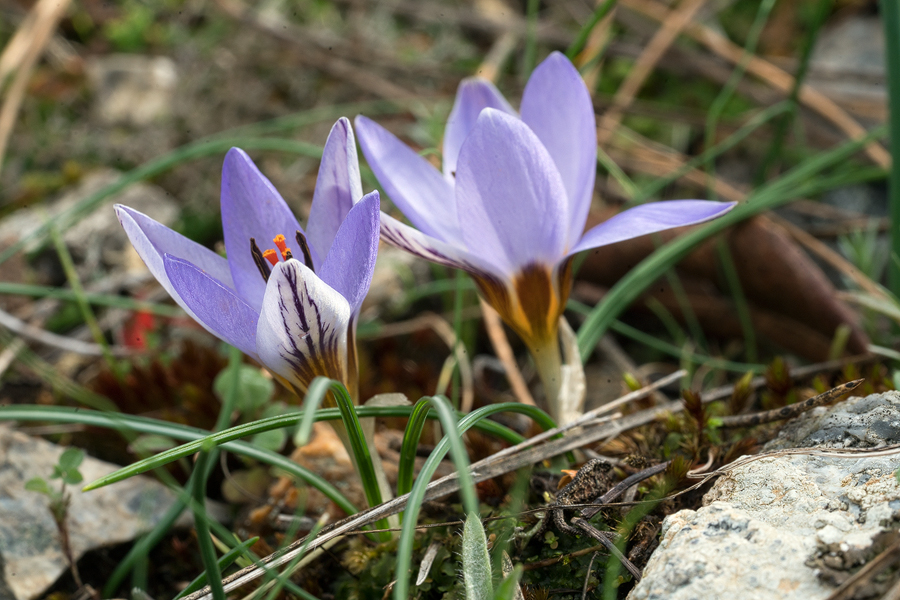
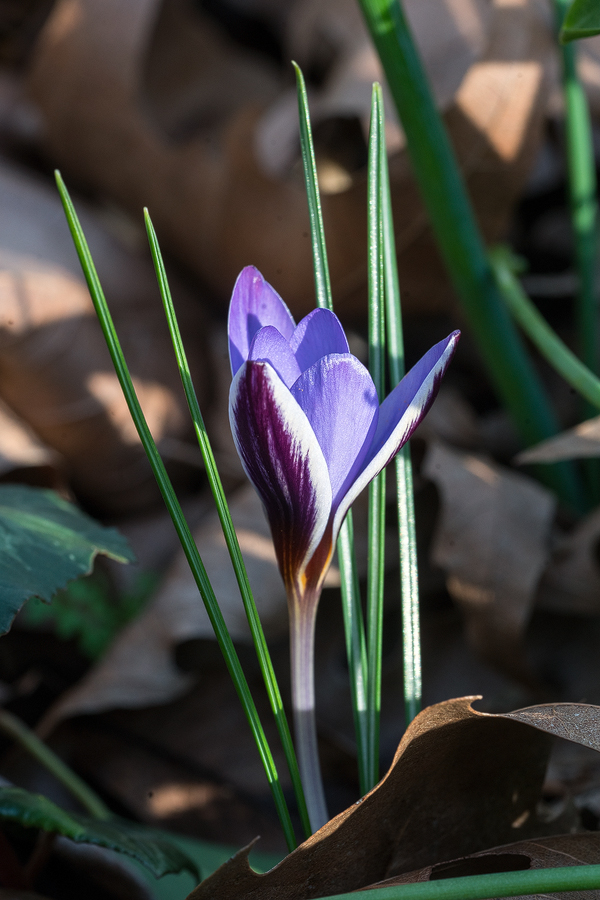
* There are 20 generally accepted snowdrop species, a total that rises to 22, if you include the controversial Galanthus samothracicus and G. graecus, which is likely to be split from G. gracilis and formally renamed soon.
